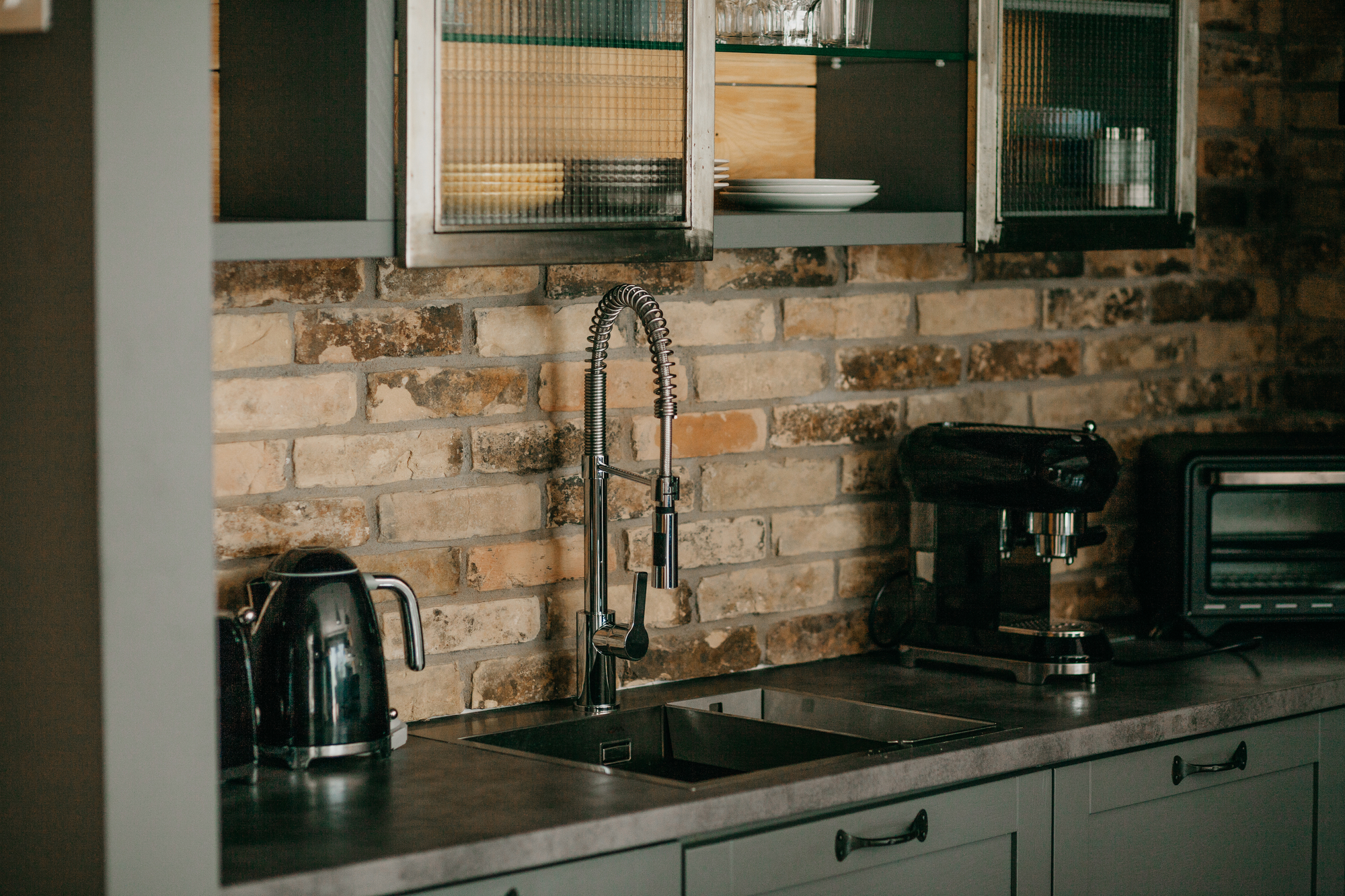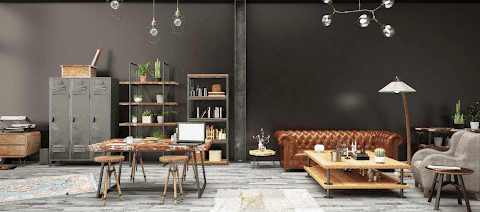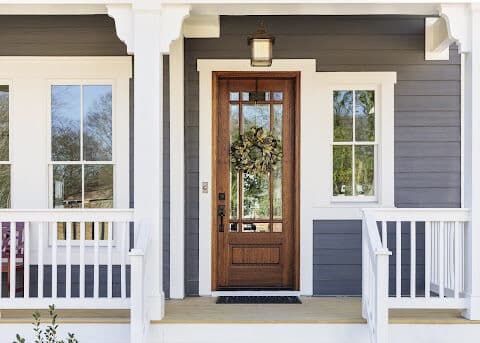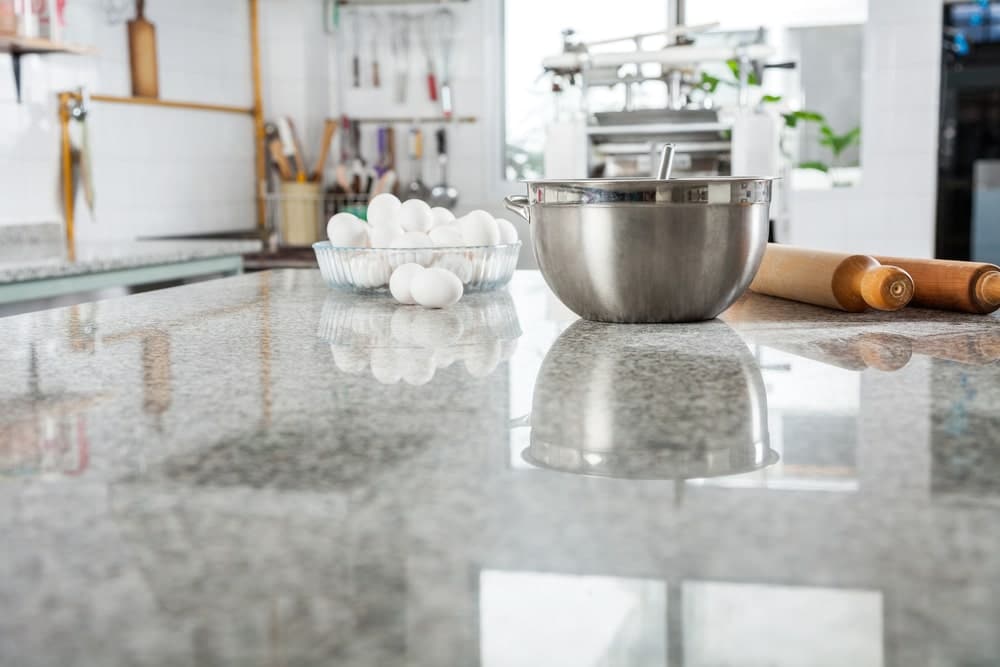In the realm of interior design and home decor, materials like concrete and cement have long emerged from their sole association with industrial settings to become versatile and chic options for wall finishes. Concrete and cement finishes offer a range of textures, appearances, and design possibilities that make them suitable for various interior styles.
Understanding the Basics of Concrete and Cement Wall Finishes
Wall finishes, such as concrete and cement, add aesthetic appeal and practical functionality to interior design. These finishes are popular for their versatility, resilience, and modern, industrial charm. While often used interchangeably, cement is a binding ingredient in concrete, which also includes fine and coarse aggregates. When mixed with water, concrete hardens into a durable material suitable for various interior and exterior surfaces.
Differences Between Concrete and Cement Wall Finishes
While both concrete and cement are used for wall finishes, it’s essential to note the differences between them. Cement finishes typically consist of a thin coat of cement applied directly onto the wall surface, resulting in a smooth, modern finish. On the other hand, concrete wall finishes are thicker and more textured, providing a rustic and rugged appeal.
These differences result in a unique aesthetic for each type of finish. Cement wall finishes are more suitable for modern, minimalist interiors, while concrete wall finishes blend seamlessly into industrial or rustic design schemes.
Concrete Texture: More Than Meets the Eye
Concrete wall finishes provide a wide range of design options due to their diverse textures. The final appearance of concrete is greatly influenced by the finishing techniques employed. Interior designers can achieve various textures, ranging from smooth and polished to rough and irregular, by manipulating the concrete’s texture using different tools and methods.
The Potential of Versatility in Concrete Finishes
The versatility of concrete finishes is boundless, encompassing a variety of textures, colors, and patterns. Moreover, it’s possible to emulate other materials, such as wood or stone, with certain techniques, creating faux concrete finishes. This ability to mimic other materials makes concrete a cost-effective solution that doesn’t compromise style.
Various Types of Concrete and Cement Wall Finishes
Given the wide range of finishing techniques and effects, it can be daunting to decide which concrete or cement wall finish to employ. Each option lends a distinct character to a space and enhances its design aesthetic.
Industrial Look with Polished Concrete
Polished concrete, with its high-gloss finish resembling polished stone, is a popular choice in modern interior design. Achieved through grinding with diamond polishing pads, it offers a smooth, reflective surface. Its clean, minimalist look suits modern interiors, and its durability and low maintenance make it ideal for commercial spaces. This finish adds an industrial chic vibe while providing a practical surface resistant to everyday wear and tear.
Textured Depth with Stamped Concrete
Stamped concrete, also called imprinted or patterned concrete, involves using a mold to imprint textures or patterns onto wet concrete, creating an embossed finish with a three-dimensional effect. This versatile finish offers endless possibilities, mimicking materials like brick, stone, wood, and tile. It provides an affordable alternative when these materials are inaccessible or impractical.
The Natural Aesthetic of Exposed Aggregate Concrete
Exposed aggregate concrete reveals visually exposed coarse aggregate on the surface, creating a naturally pleasing aesthetic. Achieved by removing the top layer of cement paste, this finish is highly durable and skid-resistant, making it ideal for high-traffic areas. The visual effect varies based on the chosen aggregate, offering styles ranging from rustic to sophisticated.
The Rustic Charm of Whitewashed Concrete
Whitewashed concrete creates a rustic, charming look by applying a thin layer of white or subtly tinted lime wash to the surface. The result is a softer, lighter finish that complements shabby chic or farmhouse interior styles. In addition to visual appeal, this technique leverages lime wash’s natural antibacterial properties, promoting a healthy indoor environment. It adds a warm, homey feel to the robustness of concrete and cement wall finishes.
Enhancing Concrete Walls with Decorative Techniques
Concrete wall finishes offer vast practical and aesthetic possibilities, turning ordinary walls into works of art through various decorative techniques. Known for simplicity, durability, and versatility, concrete can mimic materials or showcase unique patterns.
One method, decorative concrete overlay, transforms existing walls with textured, colored, and patterned surfaces. From rustic to modern, it’s an economical way to refresh old concrete. Acid staining is another technique, creating vibrant, multi-tonal colors with a marble-like appearance, adding depth and character through swirls of diffused color.
The Benefits of Utilizing Concrete in Interior Design
Concrete and cement wall finishes bring an array of benefits to interior design. Being a durable and versatile material, concrete can complement various design styles while offering long-lasting quality. Here are some noteworthy advantages of using concrete in interior design:
Durability: Concrete is known for its longevity, strength, and resistance to wear and tear. Its durability ensures that it can withstand heavy traffic, making it a perfect choice for both residential and commercial spaces.
Maintenance: Concrete finishes require minimal upkeep. Regular dusting and occasional sealing are usually all that’s necessary to maintain a concrete wall in pristine condition.
Versatility: Concrete can be shaped, colored, and finished to suit any design or architectural style. Whether it’s a rustic concrete bathroom design or a modern polished concrete floor finish, the material offers plenty of versatility.
Aesthetics: Using concrete opens up an array of design possibilities. With faux concrete finishes, you can imitate the look of stone, wood, and even leather while honoring the distinctiveness of concrete’s inherent texture.
Sustainability: Concrete’s energy efficiency and capacity for retaining warmth make it an eco-friendly choice. Additionally, its longevity means less frequent replacement, reducing its environmental impact.
Expert Insights from High Performance Home
Explore innovative 3D wall panels for your home and get advice on selecting the ideal paint for your walls with High Performance Home. Our website offers valuable insights into the latest home design trends, along with blogs that cover a variety of topics. Whether you’re navigating your wall coverings options guide or seeking bathroom wall covering services for your home, we provide insider information on how to enhance your living space with wall coverings. Learn how to select kitchen wall coverings that cater to your lifestyle and explore our mission to connect stakeholders in the home industry for performance and development. Visit High Performance Home for a guide to elevating your home aesthetics and functionality.
Craving a kitchen that elevates your cooking experience and its aesthetic? Look no further than the transformative power of high-quality wall ovens.
Read More →Craving a kitchen that elevates your cooking experience and its aesthetic? Look no further than the transformative power of high-quality wall ovens.
Read More →Are you considering upgrading your windows and doors? Whether it’s a cosmetic refresh or a security or energy efficiency priority, selecting high-quality
Read More →Your kitchen is often called the heart of the home, so it makes sense that you’d want it to reflect your style
Read More →




